Fukushima Study Tour with International Journalists
10/20-22/2023
In October 2023, the members of the eco-temple network in Japan welcomed fellow member Emilie Parry from the U.S. and a group of 12 international journalists from the Jefferson Fellowship Program of the East-West Center of the University of Hawaii. The tour was divided into 2 main sections with visits to the Kanto and Kansai areas of Japan. The Kanto portion visited the eco-temples of Rev. Hidehito Okochi. The Japan eco-temple group also led the journalists on a four day reality tour of Fukushima to see the lingering effects of the nuclear disaster there. This is the fourth time the group has led such an international tour of Fukushima since 2012.
Interfaith Forum: We are firmly opposed to the discharge of radioactive “ALPS treated water” into the Pacific Ocean! 声明放射能汚染水(「ALPS処理水」)海洋放出に断固反対します
Background:
The broad purpose of the Jefferson Fellowships is to enhance public understanding through the news media of cultures, issues and trends in the United States and the Asia Pacific with a special focus on a particular theme. The 2023 Jefferson Fellowships explored a theme of “Inequality in the US and Asia.” An immersive dialogue, travel, and reporting program to Honolulu, Hong Kong, Tokyo, Fukushima, and Kyoto contextualized and compared widening disparities of income, wealth, and opportunity within the United States and Asia. The program enabled journalists to better understand the distributional consequences of technological change, globalization, and market reforms in dominant globalized industrial systems, and emergent models and theories for markets and governance of the twenty-first century and the Anthropocene. From the Fourth Industrial Revolution and the impact of AI (Artificial Intelligence), to New Systems Markets, Climate Smart Markets, and the Great Turning or Sustainable Revolution, this program critically engaged with the liminal and applied spaces where theory and policy meet lived experience, agency and opportunity. The theme also explored how income and wealth inequalities are reinforced by inequitable access to opportunity in such critical areas as food systems, education, healthcare, financing and credit, housing, and infrastructure, and the new models responding to, or further aggravating, disparity. In particular, Japan has long been considered one of the world’s most equitable developed countries due to income and inheritance tax policies that hinder the accumulation of capital over generations as well as social security benefits that significantly raise the net incomes of the country’s low-income citizens. Inequality, however, is on the rise driven by a greying of society; intergenerational, gender, and urban-rural wealth disparities; and the growth of irregular (hiseiki) employment over life-long employment.
The Culture of Silence and Denial in Fukushima and Japan
Local concern has been high since the beginning of the Fukushima disaster in 2011 for the young people of Fukushima who are exponentially more susceptible, the younger they are, to cancer, especially thyroid cancer, from the radiation that permeates the air, water, and soil of the region. Rev. Okochi, his colleagues in the Interfaith Forum for the Review of National Nuclear Policy, and other Buddhist organizations, such as AYUS, were active in the early years of the disaster to provide safe places for young people to escape their local radiated environments (as documented in our two publications of that time). By 2022, these concerns had led to despair in some 300 cases of thyroid gland cancer being diagnosed in young people in Fukushima Prefecture. This figure can be extrapolated to an average of more than 30 people per population of 100,000, which is much higher than the development rate of thyroid cancer of 1.7 people per 100,000 among late teens in neighboring Miyagi Prefecture. (Oiwa, Yuri. “Thyroid cancer diagnosed in 104 young people in Fukushima”. Asahi Shimbun. August 24, 2014.) Today, these residents face the double barrier of the government’s denial of the linkages between such cancer and the fallout from the nuclear disaster as well as the pervasive culture of silencing their voices to maintain the “harmony” and peace of the community. Rev. Okochi and the Interfaith Forum continue their campaign to have these voices heard.
The Voice of Young Plaintiffs Suffering from Thyroid Cancer in Fukushima ・311子ども甲状腺がん裁判・提訴集会 311
Ajisai no Kai: The Supporting Group for Patients of Thyroid Cancer
The Supporting Group for Patients of Thyroid Cancer is a group of young persons with thyroid cancer, their families, and supporters based in Koriyama City, Fukushima. Although experts and media consider pediatric thyroid cancer as a mild form of cancer that does not require treatment, this is not always the case. This group supports each other by sharing information in order for the patients to receive better treatment and live a better life as much as possible. This group does the following projects throughout the year:
1) Café gatherings: About every other month, they create the occasion to know each other better, to exchange information, to learn about thyroid cancer, to participate in cooking and pressed flower classes, and so on.
2) Outreach program: They perform home-visits of patients, providing supplies and counseling on the issues faced by the families. For the patients whose illness is severe, they support them to get a second-opinion as well to accompany them to the hospital/ clinic in order for their treatment to be improved.
3) Research and Advocacy: They collect updated information for the treatment and improvement of quality of life (QOL) from academic societies and seminars regarding the thyroid. They also try to enhance the rights of patients through exchanging views and opinions with National Diet members and local diet members.
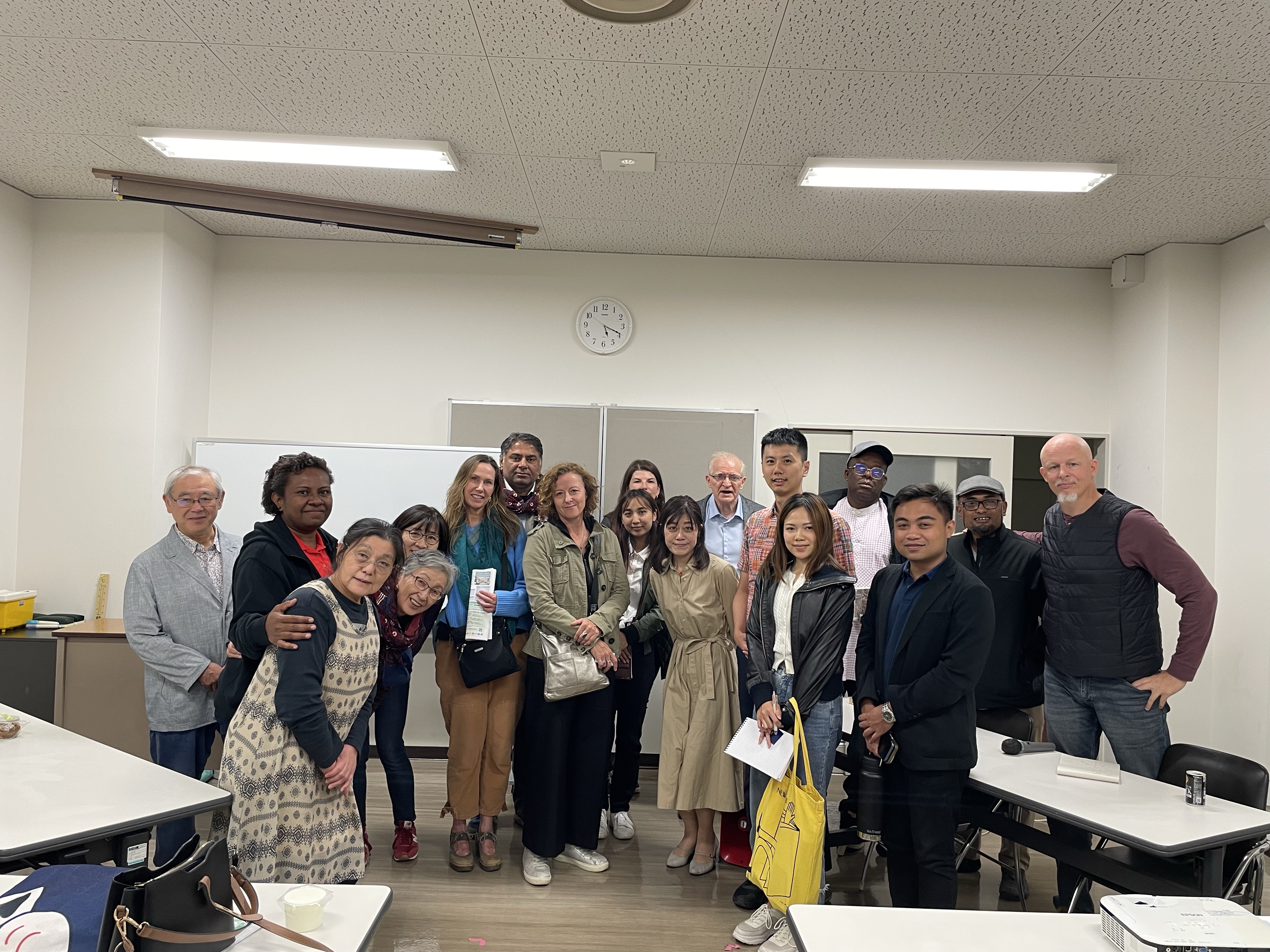
The Empty Promise of How Technological Progress Will Solve Our Human Condition
If there is a visual symbol for the nuclear disaster of Fukushima that parallels the one of the Atomic Bomb Dome in Hiroshima, it would be the giant billboard over top the main shopping district of the town of Futaba, located just a few kilometers from the Fukushima #1 reactors. The sign reads “Nuclear Power: Energy for a Bright Future” — a monument to Japan’s “recovery” or “reconstruction” (fukko) from World War II but now to the brokeness of that recovery in a “disconnected society” (mu-en shakai) rife with mental illness, suicide, and environmental disasters.
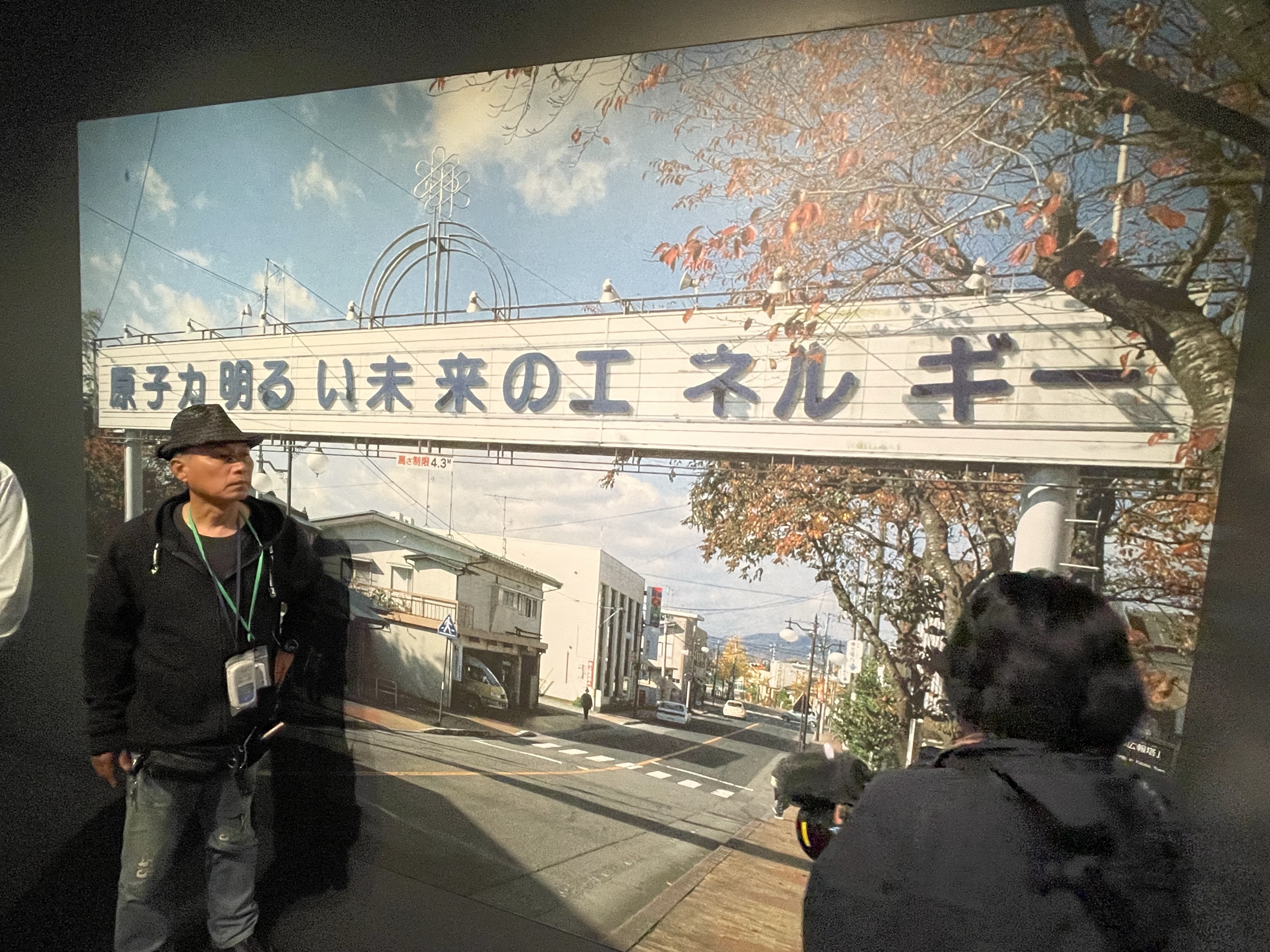
Mr. Sumio Konno is from the nearby Tsushima district, also a highly radioactive contaminated area. He was a longtime employee of the nuclear power plants in the region working as a skilled technician, as opposed to the disposable labor force doing hazardous cleanup work. At the time of the disaster, he was working in the Onnagawa nuclear plant with three reactors. Although this plant was located at the very heart of the tsunami, it did not endure a significant accident such as the one at the Fukushima #1 reactor, whose safety conditions were severly neglected. By the time, he could return home, his wife and young children had already evacuated. They are now residing in a temporary house in Fukushima city. His house still remains in Tsushima, but it does not seem that he and his family will ever have a chance to go back there. The Tsushima district is still designated as a difficult to return area, and only 1.6% of the entire town has been cleared for return. This 1.6% of the town was assigned as a Specified Reconstruction and Revitalization Base Area and decontamination efforts were made by the government. However, the rest of the town has not yet been tackled. Mr. Konno’s house probably will be subject to be demolition in the future. He has to choose what to do with this asset.
Mr. Konno led our group to his parents’ house and the home of his ancestors. To be able to enter this area and lead our group, Mr. Konno listed the official purpose to visit his ancestors’ graves– an access once denied. The group had to enter this area and his house wearing protective Tyvek suits. Observing the abandoned remains of the house ransacked by wild animals and especially the family Buddhist altar with pictures of generations of family left on the walls was deeply sobering and one of the most impactful moments of our tour. Needless to say, Mr. Konno no longer believes nuclear energy brings any promise for our lives and conducts these tours regularly to educate outsiders of the ongoing reality of Fukushima. When the same term “recovery” or “reconstruction” (fukko) is used to speak of this region, Mr. Konno responds, “That’s the last thing I want to hear. These are not words that should be used loosely. Fukko is about things getting back to normal, and then standing up and starting again. There’s no such thing as fukko when you can’t go back to normal and when you can’t rise up again”.
See an earlier interview conducted with Mr. Konno here
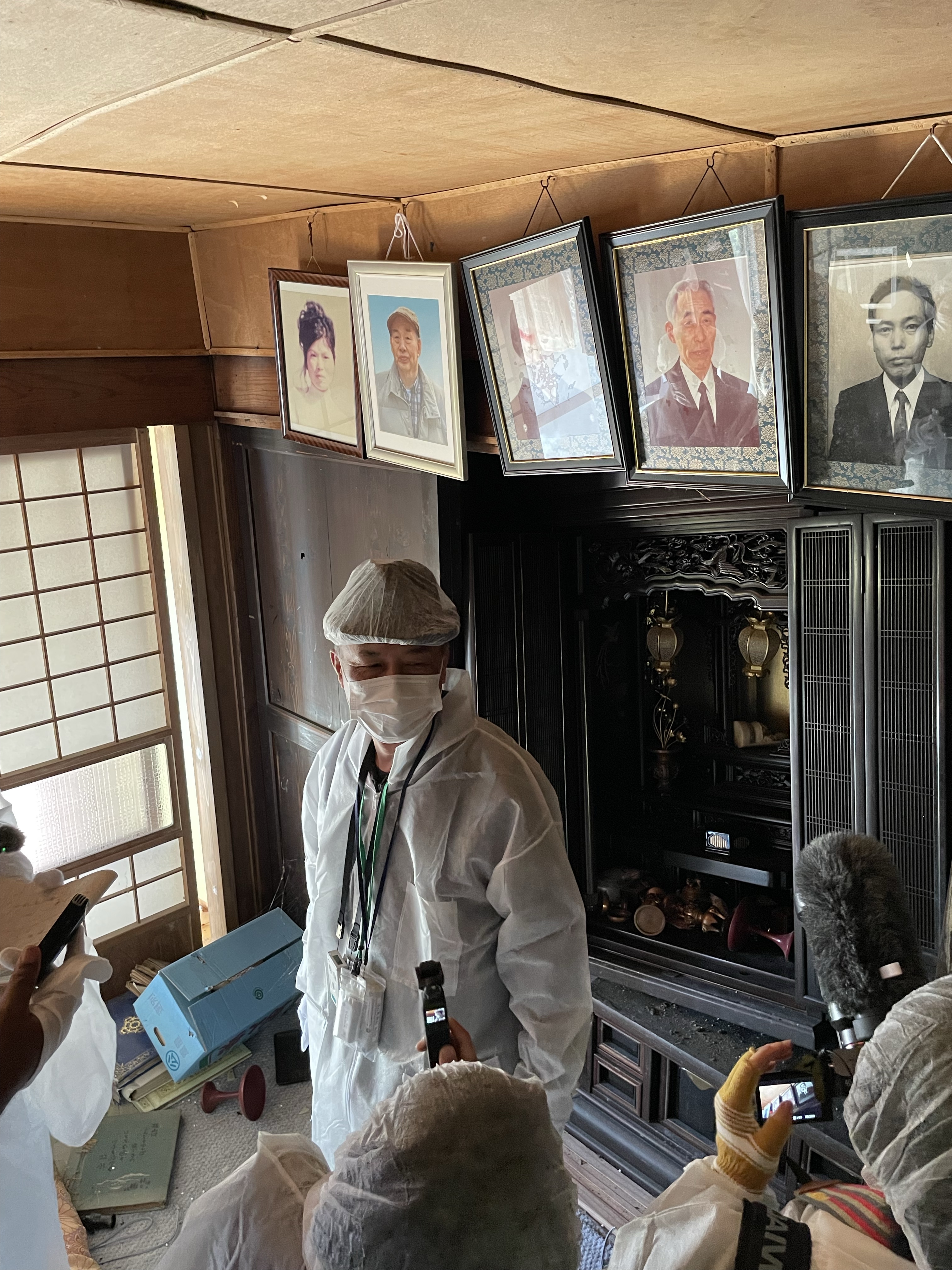

Mr. Konno also led us on a tour of the Tanashio Industrial Zone, 10 kms north of the stricken reactors. This zone is part of the Fukushima Innovation Coast Framework, which is a national project that aims to restore the industry lost this area and build a new industrial base in the area. It is filled with mega-solar, hydrogen fuel technology and robot test project sites — what appears as another attempt at the promise of a “bright future” with the wonders of technology. Perhaps the most bizarre site in the area was the building of a dairy farm between this site and the stricken reactors. The possibility of dairy cows ingestion radiation and transmitting it to humans through their milk is a fairly well established fact. The audacity to try to convince and sell to citizens milk farmed from a region next to the second largest nuclear accident in human history boggles the mind.
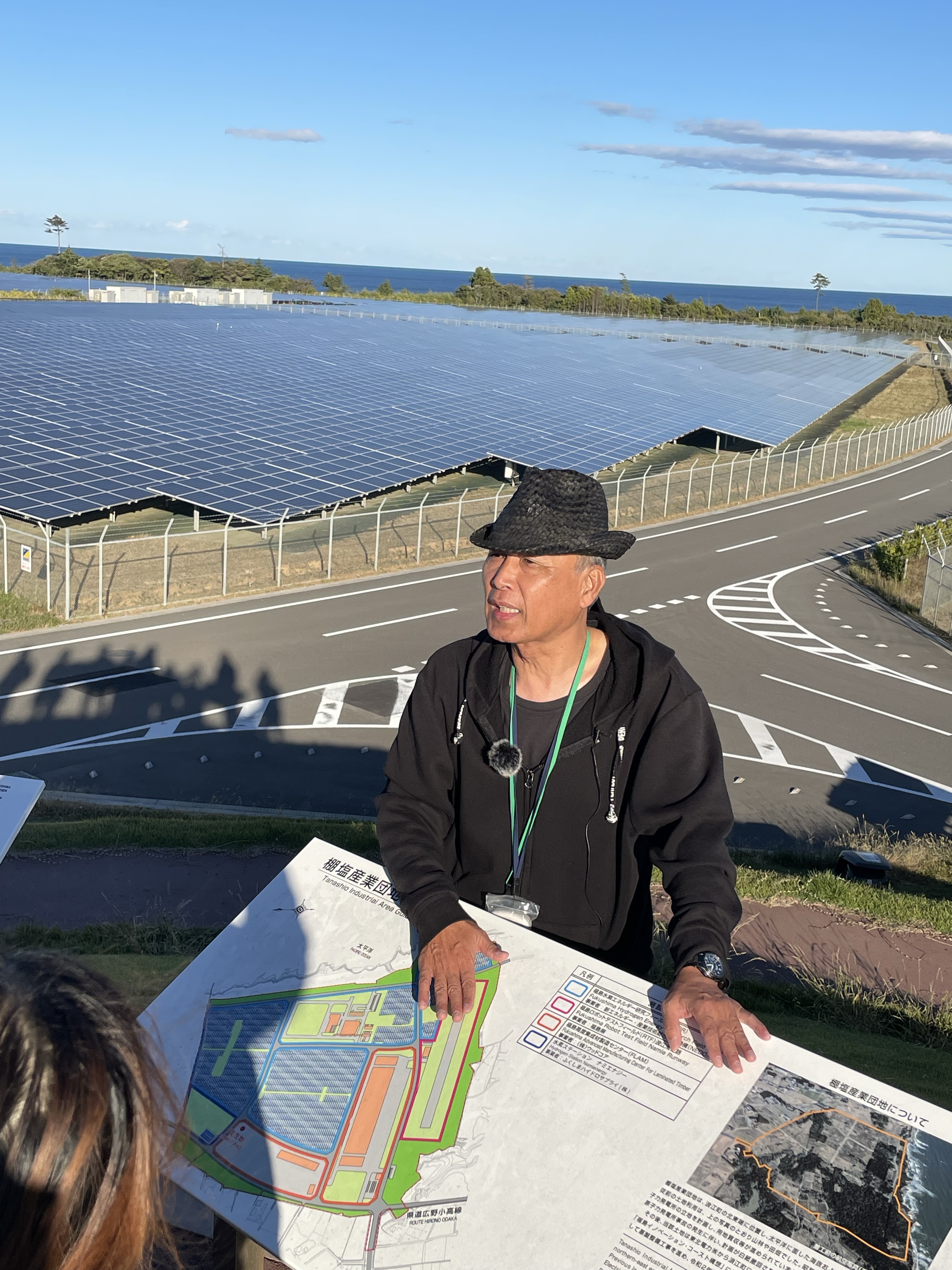
Competing Narratives of History
One of the fundamental problems that still exists in Fukushima are the different narratives on how life has unfolded since the disaster. As we have seen above, the central government is very focused on following its tradition of massive industrial projects as a barometer of the well being of the nation and its citizens. On our next stop, we visited the Great East Japan Earthquake and Nuclear Disaster Memorial Museum, which presents a narrative created by the Fukushima Prefectural government. There is quite an amount of critical information in the museum, specifically portraying l the accident as a man-made one due to the negligence of the Tokyo Electric Power Company (TEPCO) and the central government. However, the prefectural government’s message also has a level of denial due to its desperate hope for reviving the region. Thus, a voice of bravery, energy, and optimism (core Japanese cultural values) permeates the museum with constant reference to “recovery” and “reconstruction” (fukko). In this way, one of the glaring omissions of this museum is proper information on the ongoing health menace of localized radiation and the rates of cancer of young people in the region.
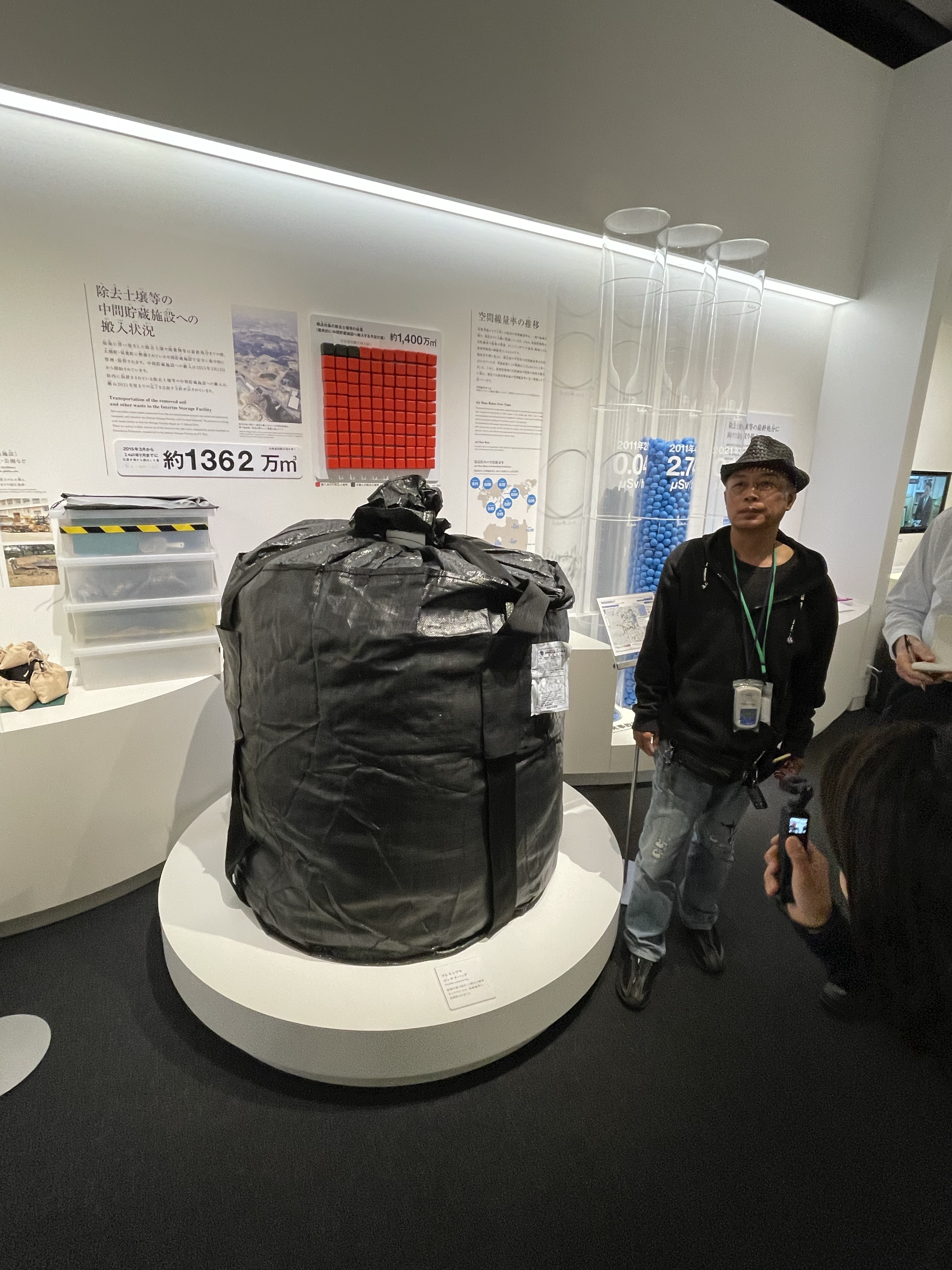
A third narrative is found in the efforts of Mr. Konno and others, such as at Our Disaster Memorial Museum. This is a museum created by photo journalists and community people who wanted to deliver their experiences, messages and lessons from the earthquake and nuclear disaster. The word moyai is the theme of this museum, which means the strong ties among people. One supposes that real “recovery” and “reconstruction” (fukko) cannot begin until at least the latter two voices of prefectural government and local citizens are reconciled, and better yet all three voices including outside national interests are reconciled.
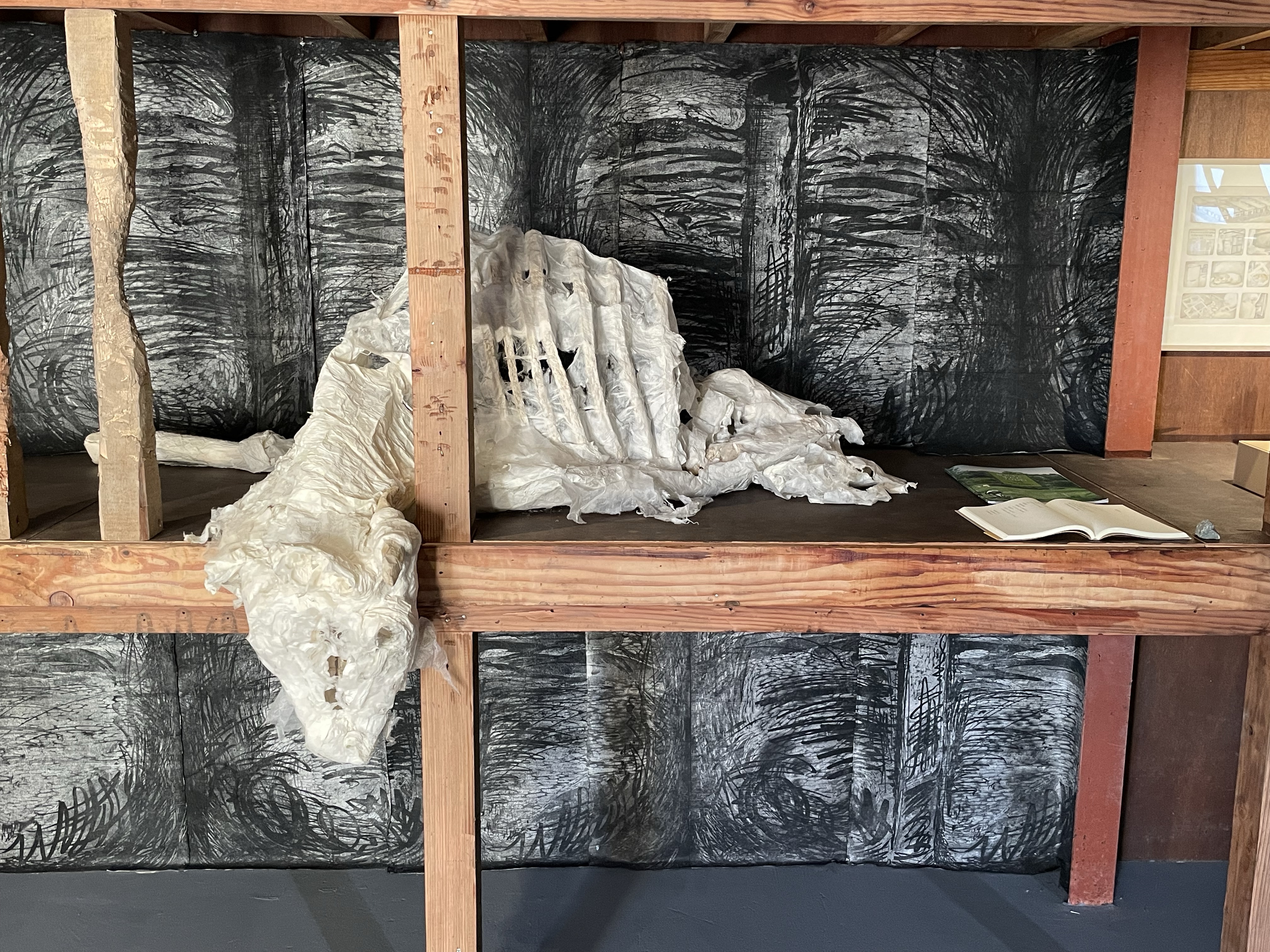
ARTICLE: The Unsurpassed Wisdom of Enlightenment and the Right to Life of Cattle – Takumi Sakamoto
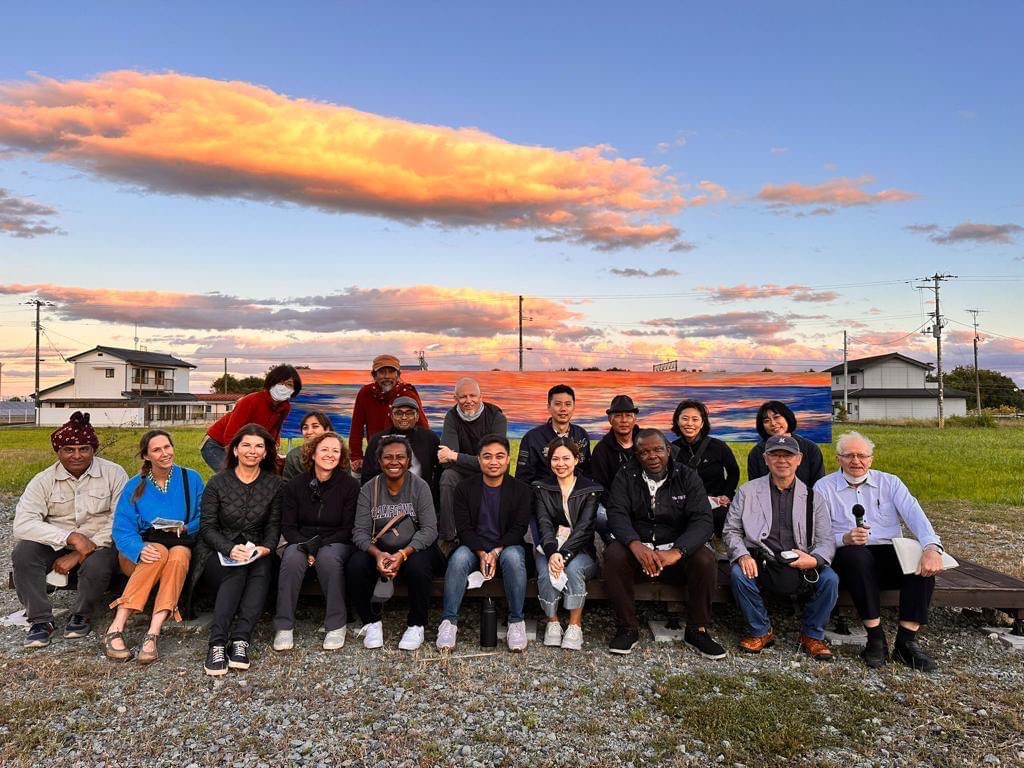
Resiliency & the Building of Alternative Society among Fukushima Residents
Futabaya Ryokan (traditional inn):
Our last night in Fukushima was spent at the Futabaya Ryokan. According to Ms. Tomoko Kobayashi, who is its host, they had to evacuate after the earthquake in 2011. The tsunami reached the front door of the inn. However, after one year from the earthquake when people were allowed to go in the area only during the daytime due to the radiation, she started to prepare to reopen the inn. It took two years for restoration. She is interested in restoration of the community as well and the inn serves as hub for people coming in and out of the area concerned with the issue. During our time there, we learned of a citizens project to publish a book detailing the true extent of radiation from nuclear power plans around the entire country. Performing incomplete surveys of the extent of radiation, especially in Fukushima, is one of the many way the government avoids responsibility for this issue and tries to perpetuate the “myth of safety” around nuclear power. Various citizens groups are working hard to present a different picture of the reality.
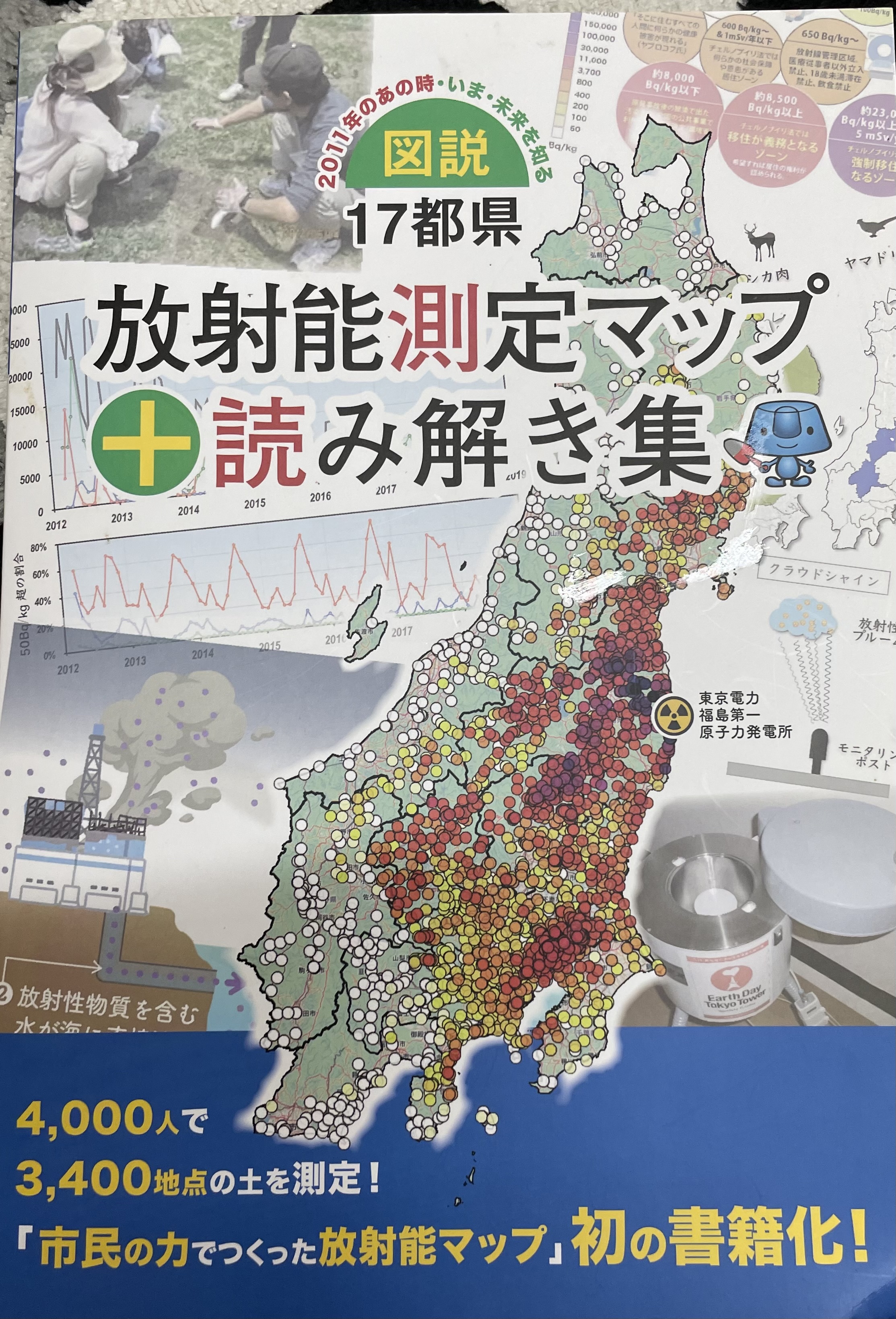
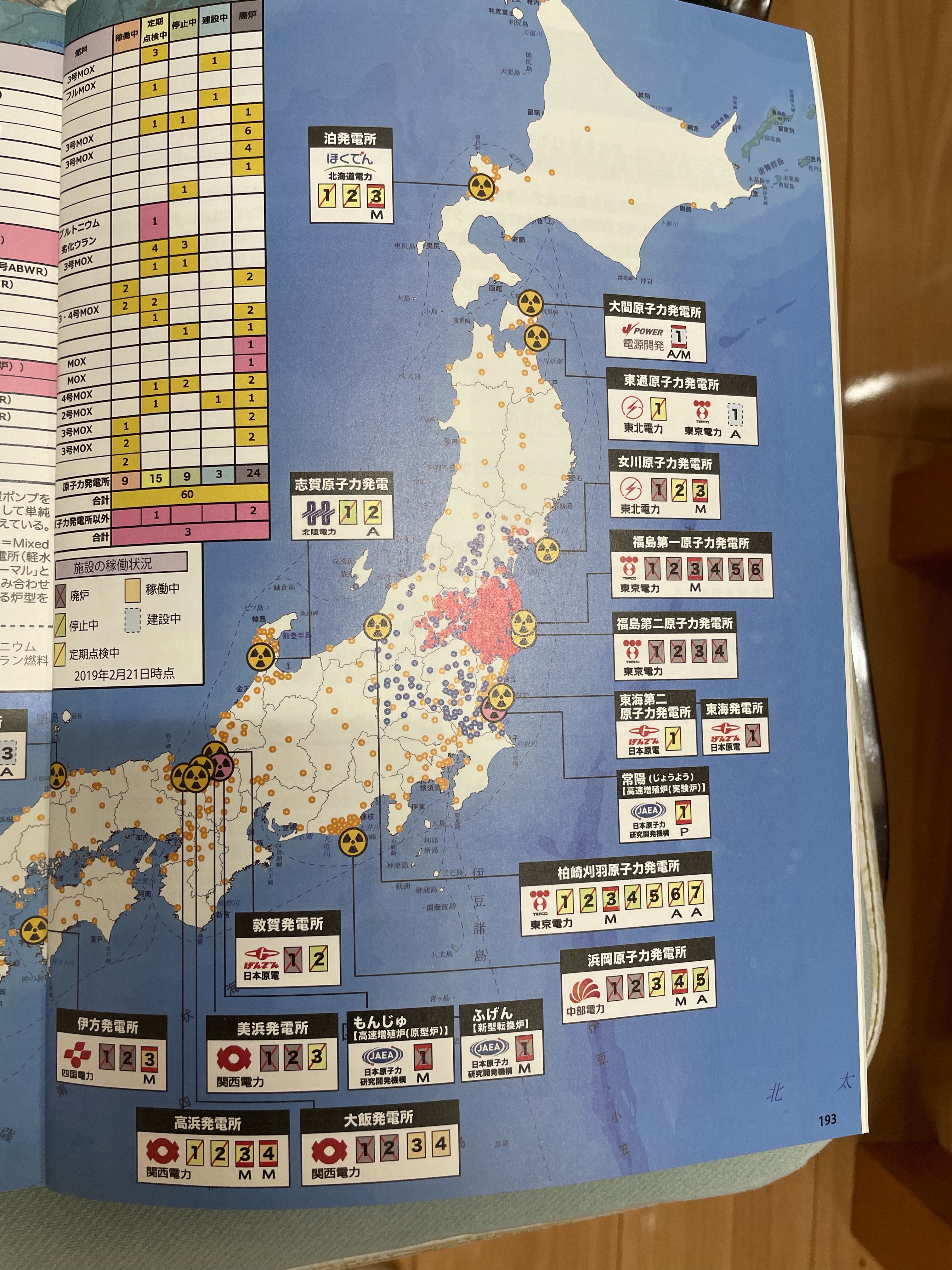
Nihonmatsu Eino Solar Co. Ltd./ Sunshine Co. Ltd 株式会社二本松営農ソーラー/株式会社Sunshine
Nihonmatsu Eino Solar Co. Ltd. is a farm-based power generation company operated by three organizations: 1) Gochikan Co. Ltd, which creates local energy sources in Nihonmatsu city in cooperation with various sectors aiming for self-supporting community, local cooperatives, 2) Co-op Miyagi and Co-op Fukushima, and 3) the Institute for Sustainable Energy Policies(ISEP)which is a non-profit (NPO) thinktank to provide basic support. Sunshine Co. Ltd is a corporation qualified to own cropland established to develop this project. Hiring two staff, one of them is a returnee from the nuclear accident, it operates 6 hectares of farmland with a view of Mt. Adatara. They produce renewable energy equivalent to the usage of 618 households (3% of all households in Nihonmatsu city) or 1,855 battery powered vehicles, as well as a plenty of agricultural products such as Shine Muscat grapes. With the realization of a new type of agriculture and land use in the decarbonized era where agricultural production and energy production have a synergistic effect, they seek to develop the next stage of Fukushima.

The Society of Organic Farming in Nihonmatsu (Yu-no-ken) was the original organization of Nihonmatsu Eino Solar Co. Ltd/ Sunshine Co. Ltd. In 1978, Yu-No-Ken was established and started to produce organic agricultural products and direct sales to customers. In 2001, it was certified by Organic JAS (Japanese Agricultural Standards) which was established in 2000. In 2006, the Act for the Promotion of Organic Agriculture was enacted, and in those days, Yu-No-Ken’s customers increased.
In 2011, the Fukushima Daiichi Nuclear Power Plant accident occurred. Serious radiation fell around Nihonmatsu as well, although it was never designated by the government as an evacuation zone. Agricultural products were heavily affected at the beginning. Yu-No-Ken started to measure the radiation levels of their products and sold only those under the level, but it also lost most of its customers. They felt at a loss as to whether they should continue farming. Yu-No-Ken met an NGO based in Tokyo called Alternative People’s Linkage in Asia (APLA). Together they wondered what they could do for the agriculture in Fukushima. So in 2012, they started a series of seminars to think of the future of Fukushima from a variety of aspects, one of which was energy.
In 2013, Yu-No-Ken started to do research on renewable energy. At this time, they were rather against solar panels, because they might involve the deforestation of mountains and produce garbage later on. But in 2014, they visited Germany with support from APLA and the Buddhist NGO AYUS (a member of our eco-temple circle in Japan) to learn about renewable energy projects done by community or agricultural organizations. They increased their interest in biogas energy production using food waste, which could create cyclical agriculture. However, the more they learned about biogas energy production, the more they realized its difficulties. In 2015, they had a chance to visit other farmers who had started agri-voltaics, which sets solar panels above the farm land and produces energy and agricultural products simultaneously. Yu-No-Ken also thought this might be the best way for them to try at first, since they already have land and this style is not so harmful to the environment. Yu-No-Ken, APLA, and AYUS held a kickoff gathering in Tokyo that year and called for the supporters.
By 2016, Yu-No-Ken submitted an application for permission to convert agricultural land into such agri-voltaic land, but it took about one and a half years to be accepted. In 2018, the construction was finished, and Yu-No-Ken’s agri-voltaics started to produce energy. In 2019, Mr. Kei Kondo from Yu-No-Ken established the Nihonmatsu Eino Solar Co. Ltd. and Sunshine Co. Ltd.
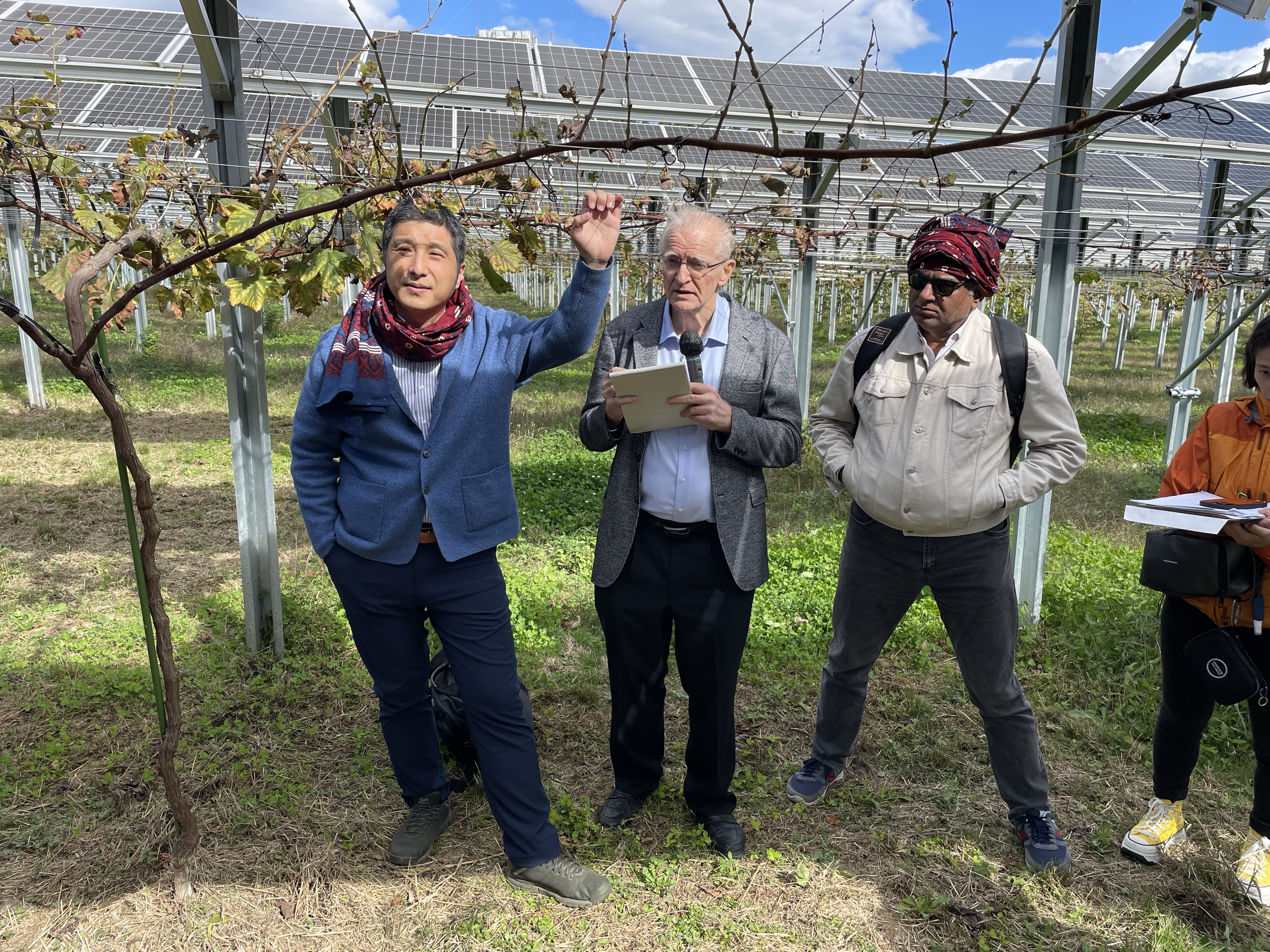
Coordinating Organization: AYUS: Network of Buddhists Volunteers on International Cooperation
Many thanks go to AYUS and its director Ms. Mika Edaki for organizing most of this tour along with Rev. Hidehito Okochi. AYUS is an NGO established by Buddhists priests based on the Buddhist principle of “interbeing”. AYUS raises funds mainly among Buddhists communities to provide NGOs that work on human rights issues, humanitarian aid in disaster areas, and so on, especially for those who are left behind by mainstream aid projects and funding. As for the people and communities affected by the Great East Japan Earthquake, at the beginning, AYUS cooperated with NGOs, starting their humanitarian assistance in Iwate, Miyagi, and Fukushima prefectures. After a half year, it found that Fukushima had received the least funds and assistance among three due to the nuclear power plant accident. As such, AYUS has mainly cooperated with NGOs working in Fukushima as well as organizing retreat camps for children living under the influence of radioactivity.
